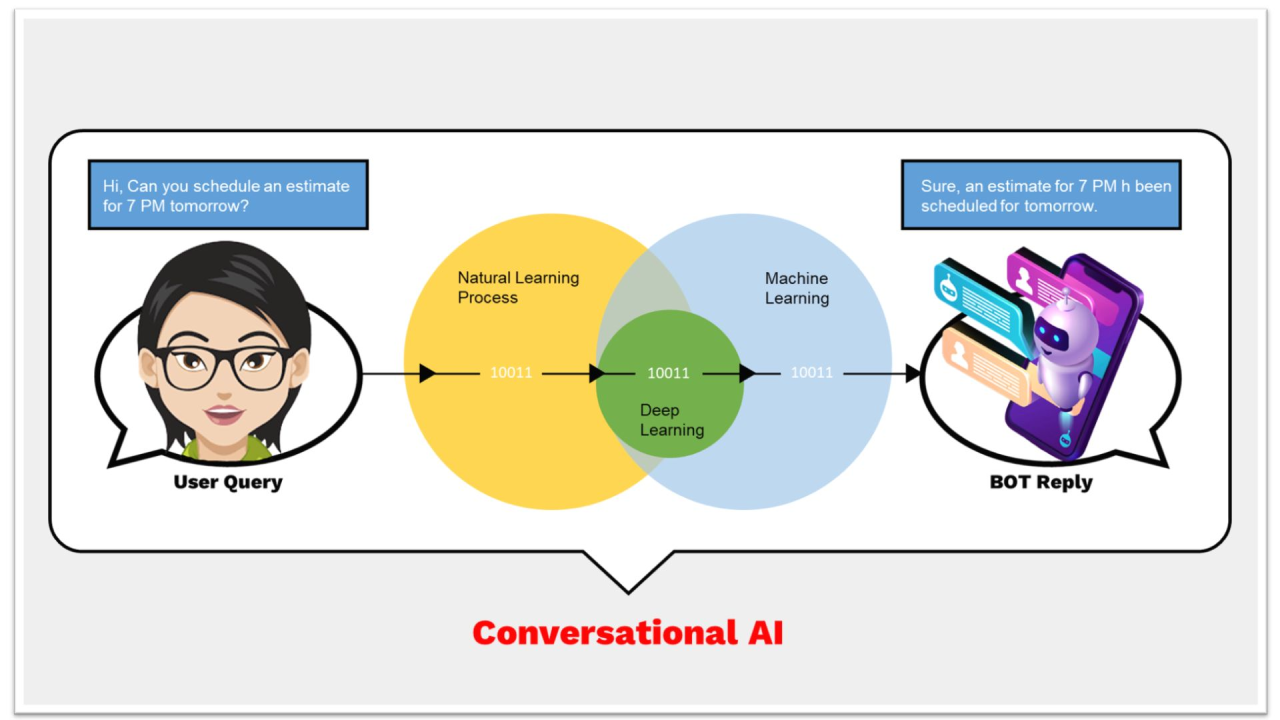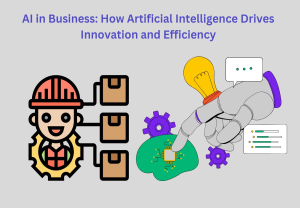Discover how Conversational AI Technology is transforming customer engagement in 2025. Learn how NLP, machine learning, and voice interfaces help businesses in the USA and UK deliver intelligent, personalized, and scalable experiences.

-
Introduction to Conversational AI Technology
-
Core Technologies Behind Conversational AI
-
Natural Language Processing (NLP)
-
Machine Learning and Deep Learning
-
Speech Recognition and Text-to-Speech
-
Integration with Cloud and Edge Computing
-
-
Benefits of Conversational AI Technology for Enterprises
-
Enhancing Customer Engagement and Experience
-
Reducing Operational Costs with AI Automation
-
Data-Driven Insights and Analytics
-
24/7 Availability and Global Reach
-
-
Real-World Applications Across Industries
-
Customer Service and Support
-
E-commerce and Retail Personalization
-
Healthcare and Telemedicine
-
Banking, Finance, and Insurance
-
Travel and Hospitality
-
-
Best Practices for Implementing Conversational AI
-
Challenges and Solutions in Conversational AI
-
Future Trends in Conversational AI Technology
-
Conclusion: Strategic Imperative for Businesses
Introduction to Conversational AI Technology
Conversational AI Technology is revolutionizing business communication. Unlike scripted chatbots, modern AI systems understand, interpret, and respond to human interactions in real-time using advanced machine learning and natural language processing.
Businesses in the USA and UK are adopting conversational AI to enhance customer satisfaction, streamline operations, and maintain a competitive edge. From customer support to internal workflows, conversational AI enables intelligent, seamless, and personalized interactions.
Conversational AI technology is revolutionizing the way businesses communicate with customers, employees, and partners. Unlike traditional chatbots, which rely on scripted responses, modern conversational AI leverages advanced machine learning and natural language processing to understand, interpret, and respond to human interactions in real-time.
From customer support to sales and internal enterprise processes, conversational AI empowers organizations to deliver personalized, seamless, and intelligent experiences. Businesses in the USA and UK are increasingly adopting these technologies to stay competitive, enhance customer satisfaction, and optimize operational efficiency.
Core Technologies Behind Conversational AI
Natural Language Processing (NLP)
NLP allows AI systems to comprehend human language in both written and spoken forms. By understanding intent, sentiment, and context, NLP enables conversational AI to interact naturally with users. This forms the backbone of chatbots, virtual assistants, and voice-enabled platforms.
Machine Learning and Deep Learning
Machine learning algorithms train AI models on large datasets, allowing them to improve over time. Deep learning networks, such as recurrent neural networks (RNNs) and transformers, power complex understanding of context and conversation flow. These technologies enable AI agents to handle increasingly complex interactions without constant human oversight.
Speech Recognition and Text-to-Speech Systems
Voice-enabled interfaces have surged in popularity, especially in mobile and IoT environments. Speech recognition converts spoken language into text, while text-to-speech ensures natural, human-like responses, creating an engaging user experience across multiple channels.
Integration with Cloud and Edge Computing
Cloud-based AI platforms provide scalability and centralized model training, while edge computing enables real-time AI processing close to the user. This hybrid approach ensures minimal latency, reliable performance, and efficient resource utilization.
Benefits of Conversational AI Technology for Enterprises

Enhancing Customer Engagement and Experience
Conversational AI offers personalized, context-aware interactions, allowing businesses to deliver highly relevant recommendations and solutions. Customers experience faster query resolution, smoother transactions, and consistent support across multiple channels.
Reducing Operational Costs with AI Automation
By automating repetitive tasks such as FAQs, appointment scheduling, and ticket routing, businesses can significantly reduce operational expenses. AI-powered systems free human agents to focus on high-value, strategic activities.
Data-Driven Insights and Analytics
Every interaction generates valuable data. Conversational AI platforms analyze customer behavior, preferences, and sentiment, providing actionable insights for marketing, sales, and product development teams.
24/7 Availability and Global Reach
Unlike human agents, AI assistants operate continuously, ensuring support and engagement around the clock. This is particularly advantageous for global businesses serving customers across different time zones.
Real-World Applications Across Industries
Customer Service and Support
Leading companies in the USA and UK are implementing conversational AI to resolve tier-1 queries, reducing call center workloads and improving response times.
E-commerce and Retail Personalization
Conversational AI recommends products based on user behavior, purchase history, and preferences, creating tailored shopping experiences that drive conversions.
Healthcare and Telemedicine
AI-powered virtual assistants guide patients through symptom checking, appointment booking, and post-treatment follow-ups, improving accessibility and efficiency in healthcare services.
Banking, Finance, and Insurance
Conversational AI enables intelligent fraud detection, account management, and personalized financial advice, ensuring secure and responsive client interactions.
Travel and Hospitality
Virtual travel assistants handle bookings, itineraries, and FAQs, delivering a frictionless customer experience that increases loyalty and satisfaction.
Best Practices for Implementing Conversational AI
Designing User-Centric Conversational Flows
Focus on simplicity, clarity, and natural language. Map out all potential user journeys to reduce friction and improve satisfaction.
Ensuring Security and Compliance
Secure data handling is critical. Ensure adherence to GDPR, HIPAA, and other local regulations to maintain trust and avoid penalties.
Continuous Training and Model Optimization
Regularly update AI models using new data and customer feedback. Continuous learning ensures relevance and accuracy in responses.
Hybrid AI-Human Collaboration
Complex queries should seamlessly escalate to human agents. A hybrid approach combines AI efficiency with human judgment and empathy.
Challenges and Solutions in Conversational AI

Handling Complex Queries and Context Switching
AI must understand nuanced, multi-turn conversations. Solution: implement context-aware models and maintain conversation history.
Avoiding AI Bias and Ethical Concerns
Bias in AI responses can harm brand reputation. Solution: train models on diverse datasets and audit outputs regularly.
Integration with Existing Systems
Connecting AI with CRMs, ERPs, and analytics tools can be challenging. Solution: adopt API-driven integration and middleware platforms for seamless interoperability.
Monitoring Performance and ROI
Track KPIs such as response time, resolution rate, CSAT, and cost savings. Continuous monitoring allows fine-tuning for maximum business value.
Future Trends in Conversational AI Technology
AI-Powered Personalization at Scale
Future AI systems will anticipate user needs proactively, delivering hyper-personalized content, offers, and recommendations.
Multimodal Conversational Interfaces (Voice, Text, Video)
Next-generation AI will seamlessly combine voice, chat, and video communication, creating richer and more immersive interactions.
Self-Learning and Autonomous AI Agents
Autonomous AI agents will continuously refine themselves without manual intervention, increasing efficiency and reducing the need for constant oversight.
Conversational AI in Hybrid Work Environments
AI will assist employees in internal processes, automating scheduling, reporting, and knowledge management, allowing human teams to focus on strategic initiatives.
Conclusion
Conversational AI technology is no longer optional — it has become a strategic imperative for businesses in the USA and UK. By integrating NLP, machine learning, voice interfaces, and cloud-native infrastructure, companies can deliver intelligent, personalized, and scalable customer experiences.
Implementing conversational AI drives operational efficiency, reduces costs, and unlocks valuable insights from every interaction. The future promises even more advanced, autonomous, and multimodal systems that will further blur the line between human and AI collaboration.
Businesses that adopt conversational AI early will not only gain a competitive edge but also redefine the way they engage with customers, employees, and partners. The era of intelligent, context-aware, and self-learning AI assistants has arrived — and the possibilities for innovation are limitless.


